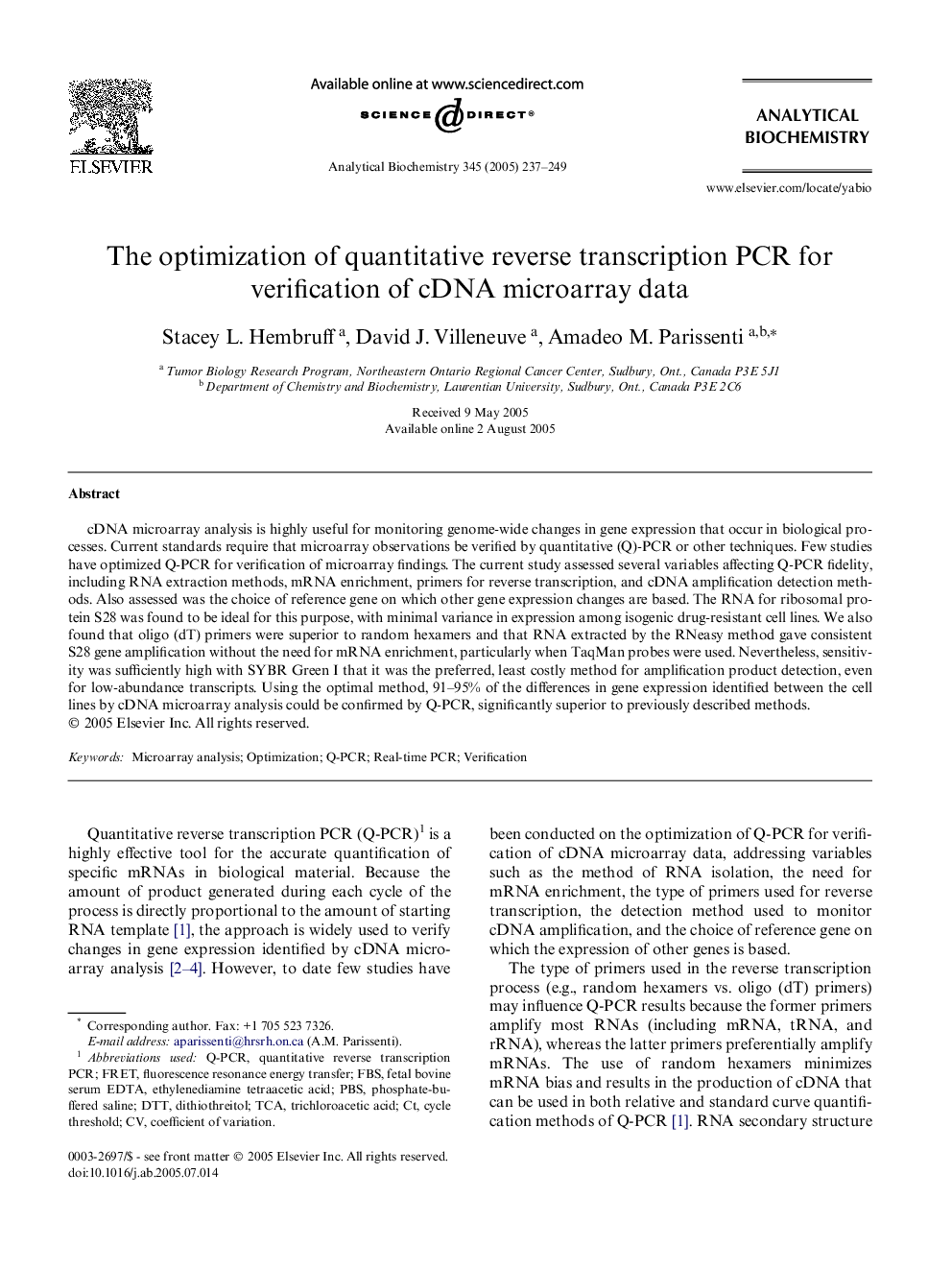| Article ID | Journal | Published Year | Pages | File Type |
|---|---|---|---|---|
| 10533046 | Analytical Biochemistry | 2005 | 13 Pages |
Abstract
cDNA microarray analysis is highly useful for monitoring genome-wide changes in gene expression that occur in biological processes. Current standards require that microarray observations be verified by quantitative (Q)-PCR or other techniques. Few studies have optimized Q-PCR for verification of microarray findings. The current study assessed several variables affecting Q-PCR fidelity, including RNA extraction methods, mRNA enrichment, primers for reverse transcription, and cDNA amplification detection methods. Also assessed was the choice of reference gene on which other gene expression changes are based. The RNA for ribosomal protein S28 was found to be ideal for this purpose, with minimal variance in expression among isogenic drug-resistant cell lines. We also found that oligo (dT) primers were superior to random hexamers and that RNA extracted by the RNeasy method gave consistent S28 gene amplification without the need for mRNA enrichment, particularly when TaqMan probes were used. Nevertheless, sensitivity was sufficiently high with SYBR Green I that it was the preferred, least costly method for amplification product detection, even for low-abundance transcripts. Using the optimal method, 91-95% of the differences in gene expression identified between the cell lines by cDNA microarray analysis could be confirmed by Q-PCR, significantly superior to previously described methods.
Related Topics
Physical Sciences and Engineering
Chemistry
Analytical Chemistry
Authors
Stacey L. Hembruff, David J. Villeneuve, Amadeo M. Parissenti,
